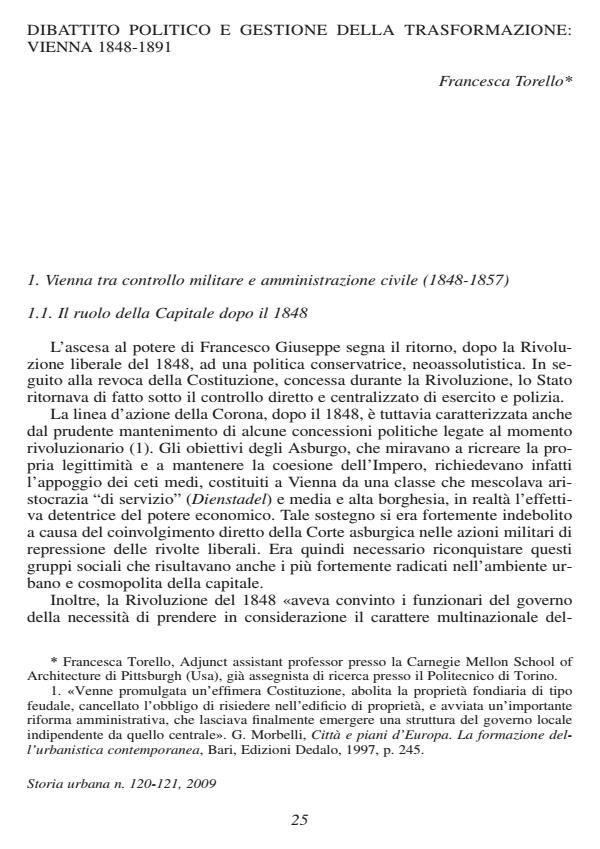Dibattito politico e gestione della trasformazione: Vienna 1848-1891
Journal title STORIA URBANA
Author/s Francesca Torello
Publishing Year 2009 Issue 2008/120
Language Italian Pages 28 P. 25-52 File size 3658 KB
DOI 10.3280/SU2008-120002
DOI is like a bar code for intellectual property: to have more infomation
click here
Below, you can see the article first page
If you want to buy this article in PDF format, you can do it, following the instructions to buy download credits

FrancoAngeli is member of Publishers International Linking Association, Inc (PILA), a not-for-profit association which run the CrossRef service enabling links to and from online scholarly content.
Political Debate and the Management of Change: Vienna 1848-1891 - The plan for the Ring in Vienna is one of the most significant examples of urban transformation of a European capital in the nineteenth century. The plan was chosen from entries in a competition published in the Wiener Zeitung in 1858. It raised a number of issues that completely upset the existing balances between various opposing power centers: military authority vs. civilian society, municipal vs. state power, public vs. private property, and financial management tools vs. building codes. As opposed to the model plan in Paris, Vienna’s plan was successful because the land involved was public and thus the government was not forced to use the politically dangerous means of expropriation by eminent domain. The financial crisis of 1873 that followed the collapse of the stock exchange did not leave any immediate effect on the city. The Christian Social Party won the 1885 elections and pushed for the creation of Greater Vien- na (GroB Wien) and for the public management of urban transportation, including the construction of a subway system. This was a turning point for urban development.
Francesca Torello, Dibattito politico e gestione della trasformazione: Vienna 1848-1891 in "STORIA URBANA " 120/2008, pp 25-52, DOI: 10.3280/SU2008-120002